Year: 2018
Best Practices for Global Patent Prosecution
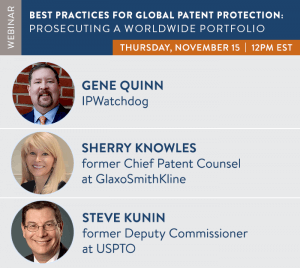
On November 15, Morningside Translations partnered with IPWatchdog to sponsor a webinar on strategies for global patent prosecution. With over 250 attendees, the one-hour webinar – hosted by Gene Quinn of IPWatchdog – gave a detailed look at cost considerations for obtaining and maintaining a patent throughout its lifetime in key countries and jurisdictions.
The webinar included two thought leaders from the IP industry: Sherry Knowles, former Senior VP and Chief Patent Counsel at GlaxoSmithKline and one of IAM Magazine’s 10 Most Influential People in IP, and Stephen Kunin, former Deputy Director of the USPTO and current partner at Maier & Maier.
The webinar kicked off with a look at issues that matter for patents in different sectors – with the spotlight on patents in the life sciences and high-tech industries. Notably, guest speaker Stephen Kunin emphasized that obtaining a patent “is not a one-size-fits-all approach.” For example, the fast-moving nature of innovation in the high-tech industry heightens the need for obtaining patent protection quickly. “Here’s where things like a prioritized examination or Patent Prosecution Highway are extremely important,” Kunin said. “The delays of the PCT — the 30 or 32-month national or regional phase entry — are actually somewhat of a discouragement in the high-tech area!”
Next, Morningside IP’s Dorothy Katz gave tips and best practices on how to maximize your IP budget to meet your patent filing strategy goals. She presented a cost analysis on two patents demonstrating how one could save between 25% and 35% on national phase filing costs for each. “With some planning ahead,” Quinn commented, you could use those savings “either to file for more protection in the countries that matter to you or you could add more countries to your footprint.” The savings can be very significant, especially for pharmaceutical patents, which, according to Sherry Knowles, can easily cost between $100,000 to $200,000 to prosecute.
The presentation continued with an overview of PCT and Paris Convention basics and then took a closer look at Patent Prosecution Highway fast track examinations. Here, Knowles highlighted her experience with filing under the Cancer Moonshot program, a program started in 2016 to accelerate the research and development of new cancer therapies. She said one application took only six days to a first office action. “I had never seen an examiner work that fast!” she said.
The discussion went on to cover PLT reference filing and a case study about the EPO and a Bristol-Myers Squibb patent relating to anti-cancer therapies. The webinar came to a close after a short summary of the key strengths and weaknesses of filing your patent in India, China, and Singapore.
If you missed the webinar on global patent prosecution practices and would like to watch the full recording, you can do so below:
About Us
Morningside equips the world’s leading organizations with a full suite of end-to-end intellectual property and language solutions. With over 4,000 clients in 55 countries, Morningside is globally recognized for its subject matter expertise and technology innovation in regulated markets such as IP, legal services, life sciences, and corporate compliance. Our IP management solutions and translation services ensure your ideas seamlessly reach new markets and audiences while allowing you to do more with your budget. Global 500 companies, international law firms, and regulatory bodies all rely on Morningside as a trusted partner to make intelligent choices for their most valuable assets.
Get the latest insights delivered to your inbox
5 Steps for Using Localization to Grow Your eCommerce Business
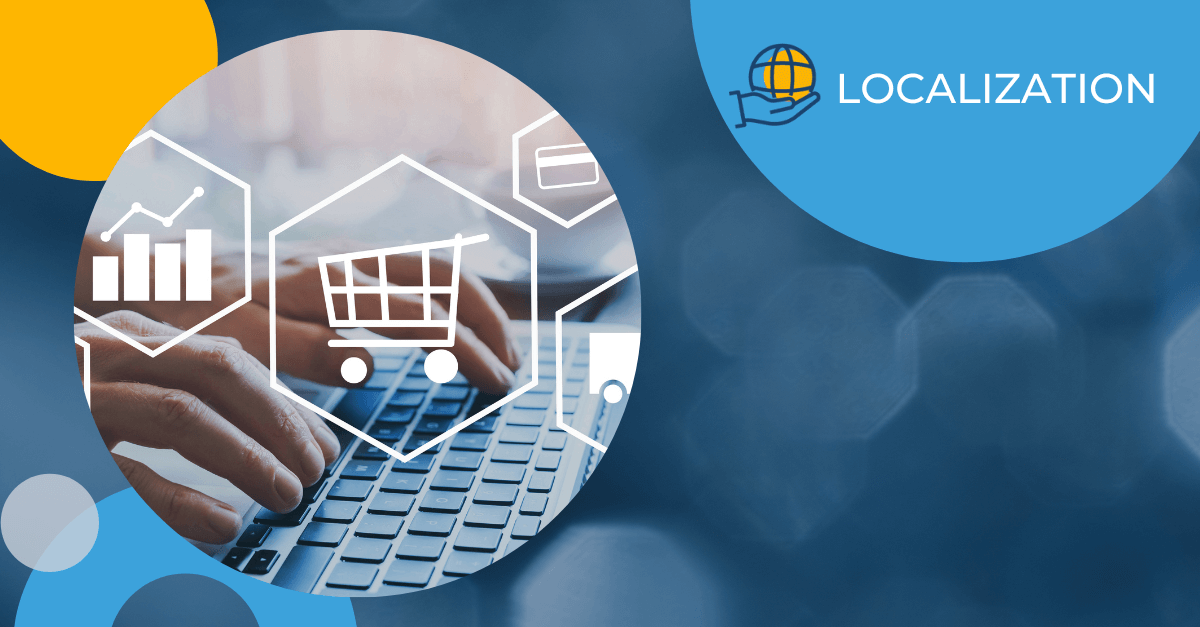
eCommerce presents nearly limitless opportunities for expanding your sales into international markets. With thoughtful and thorough localization, you can reimagine your product story for each audience, ensuring that it resonates with potential customers everywhere.
While effective translation is obviously an important element in designing and delivering a compelling experience for international customers, it’s just one part of the story. Here are a great five suggestions for developing and delivering a successful multi-market eCommerce strategy.
1. Consider your product potential in other markets
As you prepare to grow your business, start by taking a closer look at your product. Does the product make sense for other markets? If you make American flags, for example, you may not gain much by selling your product overseas. On the other hand, a product with wide appeal is a natural for international eCommerce. Have a look at what your competitors are doing internationally, and attempt to assess their level of success — it may be an indicator of how you’ll do. Also try thinking outside the box a bit: Is there a specific region or culture where your product could hold additional value?
2. Seek specific market opportunities
It may be that certain untapped markets are already obvious to you, but take some time to consider opportunities in other regions or even missed opportunities in markets you already serve. For example, could you reach a larger local audience if you start advertising in Spanish?
To learn more about possible sales venues, you may find it helpful to engage the services of a market-entry planning or international-market consultant who can provide insight regarding regional sensibilities. They can also keep you abreast of changing market specifics, such as local regulatory concerns or problematic product-delivery infrastructures.
3. Personalize the customer experience everywhere
Website personalization, based on individual preferences, is a powerful tool for eCommerce. Retail giants like Amazon do this tool all the time. Have you ever received a targeted offer based on your browsing behavior or previously entered information (e.g. a birthday special)? That’s website personalization. When done right, it helps sell products, leads to customer satisfaction, and generates brand loyalty that can produce repeat business.
4. Strengthen brand loyalty with strong support
When a customer buys your product, take the opportunity to extend the relationship by developing localized post-sales support. Positive contact can lead a customer to feel personally invested in the company. It can also lead to word-of-mouth that can generate additional customers.
Prepare and deploy responsive local-language email campaigns, social media posts, text messages and/or phone support to address the needs of customers in each market you plan to enter.
5. Make sure you are visible online
When it’s time to launch your expanded eCommerce plans, all of the marketing in the world means little if customers search online and can’t find you. The key to online visibility is the strategic implementation of SEO — search engine optimization. SEO should be localized for each market so that qualified potential customers can find you when they’re searching online for the solutions your product provides.
Something to keep in mind: Localization for SEO involves much more than accurate translations — it also requires a deep knowledge of local sensibilities to accurately anticipate the words, phrases or terminology people are likely to be searching online.
Localization and eCommerce for the win
Inventing an end-to-end experience that succeeds for customers and company alike is always something that requires time, thought, and investment, even when dealing with a single market. In eCommerce, though, it’s an absolutely essential piece of the puzzle for doing business — and connecting — with people in other cultures and places. What could be better, after all, than gaining advocates for your brand, off spreading the word in their own corners of the world?
If you need help localizing your eCommerce content, contact Morningside today.
Get the latest insights delivered to your inbox
Best Practices: Optimizing eLearning Content for Translation
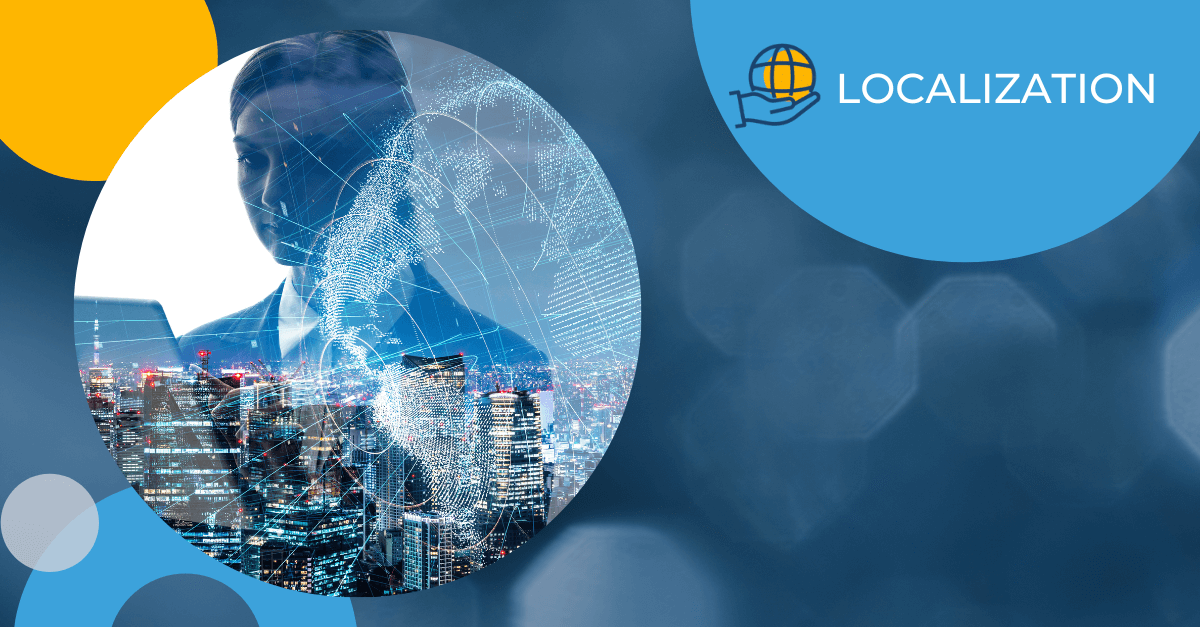
In a global business environment, the localization of eLearning tools is essential for training new team members and future professionals. However, developing eLearning courses that successfully communicate to a wide array of learners across miles, languages, and cultures can seem daunting.
Captions, slides, image text, scripts, audio narration, subtitles, quizzes, example images, and video must all be thoughtfully delivered for each target audience without losing any of the original content’s subtleties. This requires care, thoughtful planning, and a lot of work.
Partnering with an experienced language service provider (LSP) is a solution that can not only reduce your workload, but also your costs – if you take advantage of everything an LSP has to offer. With that in mind, we created this list of best practices that you can implement to avoid costly and time-consuming detours and bottlenecks during international eLearning course production.
Content creation
As you develop the content for your eLearning course, keep the following six tips in mind:
1. Don’t use slang or local jargon – Think about where your content is going to be consumed. Avoid colloquialisms, slang, acronyms, abbreviations, jargon, and metaphors that may have little meaning in another culture.
2. Know your audience and their reading level – To help keep your content as understandable as possible, consider assessing it via the Flesch-Kincaid Grade Level test. This is a popular readability test that identifies the education level necessary for a reader to easily comprehend a piece of text (e.g. a text score of 6 would require a grade 6 education).
3. Avoid using passive voice – This is where the object of an action becomes the subject of a sentence (e.g. Why was the road crossed by the chicken?). Writing in the passive voice can lead to torturous sentence construction and a lack of clarity in English. This can become a critical problem when passive text needs to be translated into other languages.
4. Use lists – People learn in different ways, and the use of lists achieves several goals. They’re visually memorable, they allow learners to grasp ideas in smaller units, and they help translators cleanly separate key ideas.
5. Expect expanding text – What can be said in just a few words in one language may require many more in another. Choose visual layouts that can be easily modified for lengthier text translations.
6. Cultural considerations – Striking an effective balance between being interesting, casual and clear is always a concern when preparing eLearning content for consumption in different countries or regions that all carry their own political and cultural contexts. If you plan to use examples in your lessons, make sure they’re applicable to your entire audience. If not, you risk alienating them or forcing a translator to re-write the passage (e.g. a baseball analogy may not work well outside of the United States). Simultaneously, you need to consider your tone and imagery choices – not all cultures perceive familiarity or fashion in the same way.
Working with an LSP
Once you’ve selected a translation company, there are a few things you can do to improve accuracy and consistency and simultaneously reduce your costs:
1. Create a glossary – To ensure consistency and accuracy in every language, you can supply a glossary of important words, phrases, product and object names, and concepts.
2. Supply style guides – Submit a style guide to codify the way you want your written content visually formatted. This will ensure that lessons look the way you want in every language.
3. Select an in-house liaison – For anything that will need to be decided quickly as work progresses, establish an internal subject matter expert (SME) at your company to act as a readily available resource.
4. Simplify graphic design work – If there are English screenshots that need to be localized, consider providing versions of the captures in each target language. If this isn’t practical, offer the LSP access to any software required for recreating the onscreen scenarios. This helps avoid time-consuming recreation of the images using photo-processing tools or including them only in English.
5. Utilize translation memory – Streamline the production workflow by sharing any past translations of similar content that can be repurposed or used as reference materials.
The final steps
Once you have completed the production of your translated eLearning course, we recommend implementing the following final checks:
1. SCORM testing – Once a lesson can be output as a SCORM module, test it thoroughly before publishing. Make sure all clicks/touches, transitions, timing, tests, and quizzes work as expected.
2. Student sample survey – If time allows, invite a small group in each target country to experience and comment on the completed course. This can provide invaluable feedback that maximizes the effectiveness of your courses and strengthens the impact they’ll have.
A reliable solution
Contact Morningside today to learn how our team of experienced project managers, linguists, voiceover talents and technical experts can ensure that your eLearning courses and modules are analyzed efficiently, translated and localized accurately, and delivered on-time and on budget.
Get the latest insights delivered to your inbox
The Difference Between a Copyright and a Patent
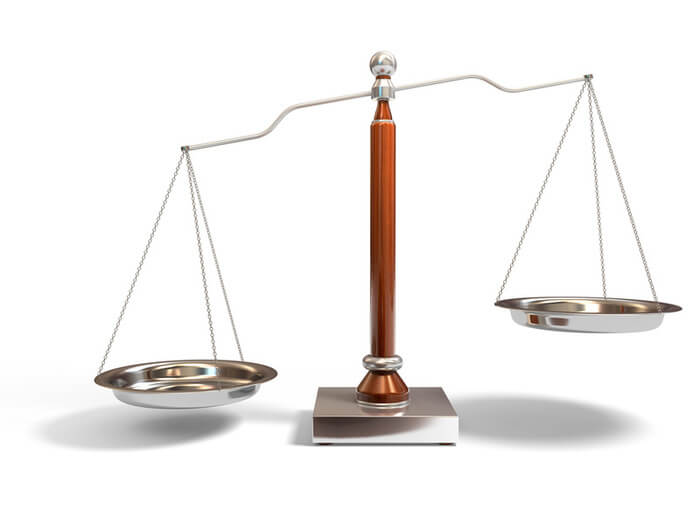
In developing a strategy for protecting intellectual property (IP), some innovators wonder if a copyright is just as effective as getting a patent. It’s an appealing option since copyrights are less expensive and easier to obtain than patents. However, the protection copyrights offer is very different from that of patents. Usually there isn’t a choice at all — the IP itself determines the type of IP protection that is necessary.
What can be copyrighted?
The U.S. Copyright Office says that a copyright protects “original works of authorship fixed in a tangible medium of expression.” In simpler language, a copyright is meant to be used for works of art, literature or music. This can include poetry, novels, movies, songs, computer software, and architecture. Note: The work of authorship does not need to be published in order to obtain a copyright.
What can be patented?
A product or a process that provides a new way of doing something, or offers a new technical solution to a problem, is eligible for patent filing. Specifically, an invention must meet the following three conditions:
- Novelty: At least some aspect of it must be new.
- Inventive step: The new aspect/s must not be obvious or easily deduced.
- Industrial applicability: The invention must be able to be made or used in an industry.
You cannot copyright or patent a mere idea
Both forms of intellectual property protection require something more concrete:
- For a copyright, the object has to be fixed in a tangible medium of expression like a painting, book, song or software.
- For a patent, the idea must be fully formed into an invention – if not in prototype form, at least in detailed renderings of how the invention can be made.
3 types of patents
According to the U.S Patent Office (USPTO), there are three kinds of things for which you can file a patent:
- Utility patents may be granted to anyone who invents or discovers any new and useful process, machine, article of manufacture, or composition of matter, or any new and useful improvement thereof.
- Design patents may be granted to anyone who invents a new, original and ornamental design for an article of manufacture.
- Plant patents may be granted to anyone who invents or discovers and asexually reproduces any distinct and new variety of plant.
Copyright or design patent?
The option of a design patent can cause some confusion for those trying to figure out whether to copyright or patent a design they’ve created. Ask yourself:
- Is the design physically ornamental or does it represent a functional change? If yes, you may want to submit a design patent application.
- Is it a depiction — say, a painting, drawing, photograph, sculpture or architectural design? If so, you probably want a copyright.
LegalZoom offers a helpful example: “If you’ve created a new soda bottle that has an original shape, then you are likely looking for design patent protection…If, instead, you’ve captured a uniquely distorted view of a glass bottle through your camera lens, you may have a copyright that you can register on the photo.”
How to obtain copyright protection
Copyright protection applies automatically from the moment a work of art, literature or music is created — there is nothing you have to do to copyright a work. However, if you want the option of protecting your ownership in court, your copyright must be registered with the U.S. Office of Copyrights.
Basic registration fees run from $35-85. The processing time ranges from an average of 7-9 months for electronic copyright applications or 9-16 months for those submitted on paper.
Any work registered after January 1, 1978 lasts for 70 years past the lifetime of its author. If the copyright is claimed by a corporation, it runs out 95 years after the date of publication or 120 years after the date of creation, whichever comes first.
How to obtain patent protection
To patent an invention in the U.S., you must file a patent application with the USPTO. A new U.S. patent lasts for 20 years from the application date, and the process of acquiring a patent currently takes a little over 24 months. Fee structures will depend on what kind of patent you’re seeking.
In 2013, the USPTO moved from a “first to invent” system to a “first to file” system, where patent ownership is heavily weighted toward whoever has filed the first application for a contested invention. For this reason, it may be a good idea to get an invention out of a pure-idea state as soon as possible.
Patenting an invention worldwide requires high-quality outside counsel, foreign agents, or a foreign patent filing service with a comprehensive understanding of each country’s patent laws.
Devising your IP strategy
To optimally protect your IP, you may find that you need a combination of copyrights and patents. For example, if you write a detailed description of something you’ve invented, you can copyright the description and patent the invention. Filing for either doesn’t disqualify you from applying for the other. A copyright is not an inexpensive patent, nor is a patent a more ironclad copyright. They’re two different things for two different types of IP.
Get the latest insights delivered to your inbox
5 Tips for PCT National Phase Filing
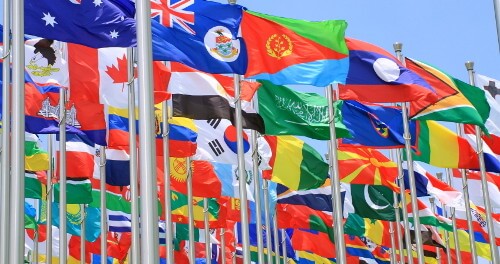
The PCT (Patent Cooperation Treaty) is a patent law treaty that includes more than 150 contracting states. It allows an applicant to seek patent protection in multiple countries at the same time by filing a single international application.
The application can eventually lead to IP protection in each designated contracting state via national phase entry, where the international application is filed in the patent offices of each respective country and evaluated according to each country’s patent law. A translation of the patent into the official language(s) of that country is also usually required.
National phase entry takes place 30/31 months from when the application is initially filed. Entering the national phase means meeting the individual requirements of each country or region, a complex and usually expensive process. Here are 5 tips to help you successfully navigate the national phase.
1. You can get a fee reduction
National phase entry is expensive. Costs include patent translation, official fees, and fees for acquiring the services of local patent agents or attorneys, not to mention your outside counsel’s fees.
However, some national and regional patent offices offer fee reductions for universities, non-profit research institutes and small and medium-sized enterprises. It is always worth checking to see if you or your organization qualify for an official fee discount.
2. You can request early entry into the national phase
You may not want to wait 30 months from the priority date of your patent application before entering the national phase. 30 months is a time limit (though late entry is usually possible), not a waiting period. For a variety of reasons, you may want to enter the national phase earlier in countries where you have already decided to seek patent protection.
3. Don’t Wait Until the Last Minute
Several steps must be taken BEFORE the 30-month deadline. You will need to appoint a local agent and instruct them in advance so that they can file the application by the deadline. If you are filing in Japan, China, Brazil, Russia, Korea or any other country where the official filing language is not English, you will also need to obtain a translation of the full specification. For longer applications, this can take several days or even several weeks. Waiting until the last minute means incurring rush fees and can add significantly to the patent translation costs, especially if the foreign agents are handling the translations. You should consider partnering with a patent translation service like Morningside IP to keep those costs to a minimum, especially for last minute filings.
4. Extensions are Sometimes Available
If you have missed the 30/31 month deadline, you may still be in luck. Several countries including Canada, China, and the EPO allow for late entry, though this usually entails a surcharge. Other countries, including Japan and Brazil, offer translation extensions, so as long as you file the application by the 30 or 31-month deadline, you can submit the translation one or two months past the deadline. Contact us if you have questions about late filing or translation extensions.
5. Evaluate Your Portfolio Regularly to Lower Costs
Filing in a specific country doesn’t mean that you have to maintain your patents there in perpetuity. You may decide down the road to stop selling products or services in that country and to shift resources elsewhere. If you are not actively enforcing your patent or seeing any ROI from that patent in a given country, you may want to sell it, abandon it, or let it expire. Annuity costs and related prosecution costs can add up, so it makes sense to evaluate your portfolio and commitment to maintaining your patent in each jurisdiction, rather than doing so out of inertia.
Get the latest insights delivered to your inbox
Ten facts you didn’t know about the Paris Convention

The Paris Convention for the protection of Industrial Property was first adopted in 1883 and marked a significant turning point in intellectual property development and protection as it was one of the first of its kind. The Paris Convention applies to intellectual property protection in a broad sense, helping the convention reign on today. You may or may not already know a bit about the treaty, here are ten facts you undoubtedly didn’t know about the Paris Convention.
1. Laying the groundwork
In 1873 the Government of the Empire of Austria-Hungary invited other countries to an international exhibition of inventions held at Vienna. However, many inventors declined to exhibit their inventions at that exhibition, due to the inadequate legal protection offered. This led to two notable developments: first, Austria passed a law, securing temporary protections for all foreigners participating in the exhibition for their inventions, trademarks and industrial designs. Second, the Congress of Vienna for Patent Reform was convened later that year. As a follow-up to the Vienna Congress, an International Congress on Industrial Property was convened in Paris in 1878. The main result of which, was the drive toward “determining the basis of uniform legislation” in the field of industrial property.
2. The first international IP convention
In 1883 in Paris, The International Convention for the Protection of Industrial Property was first signed by an initial 11 states. It has since come to be known as the Paris Convention.
3. Revisions and amendments
Since then it has been revised 6 times, at: Brussels in 1900, at Washington in 1911, at The Hague in 1925, at London in 1934, at Lisbon in 1958 and at Stockholm in 1967, and was amended in 1979.
4. A union of patenting authorities
Countries that signed the Paris Convention formed a “Union” of patenting authorities, and are sometimes referred to as the “Paris Union.”
5. Key tenets
Three main provisions were established with the Paris Convention: right to national treatment, right of priority, common rules and a unified framework for the implementation of the convention.
6. No preferential treatment
With national treatment, Paris Union countries are obligated to show no preferential treatment to patent holders who are citizens over those who are not. Patent holders who are non-residents and non-nationals of a Paris Union country are given the same expectations and rights under the law as nationals of said country.
7. International filing challenge
Before the Paris Convention, patent applications had to be made roughly at the same time in all countries where protections were sought, in order to avoid a publication in one country destroying the novelty of the invention in the other countries.
8. International filing solution
With the Paris Convention, the right of priority means that a patent that has been filed in a home country is allocated a 12-month period to file a Paris Convention application (or a direct national filing application claiming priority) in countries party to the Paris Convention. With this application Patent holders can choose to file directly with national or regional patent offices with Paris Convention priority (i.e. recognition of the initial priority date in their home country as the priority date).
9. Current contracting parties
There are currently 177 total contracting parties to the convention. The most recent countries to enforce are Samoa (2013), Kuwait (2014), and Afghanistan (2017).
10. Not to be confused with PCT
The Paris Convention is not to be confused with the Patent Cooperation Treaty (PCT). The PCT is also an international treaty, whereby applicants file once and within 12 months can file a PCT filing to preserve protections in other countries. The difference being that the PCT is equivalent to filing separate patent applications in each specific PCT country. With the PCT, patent holders have about 30 months (depending on the country) to bring the patent to National Phase and validate the patent in the specific PCT countries.
Get the latest insights delivered to your inbox
The Alice Decision and Its Fallout in the U.S.
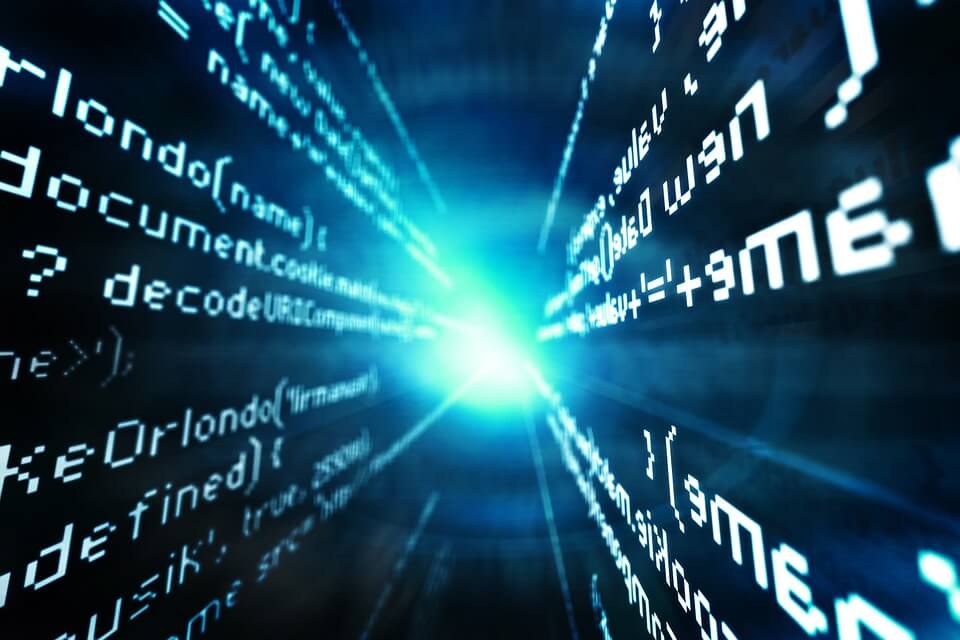
In most of the world, software can’t be patented unless it’s an element within a hardware device or system. The U.S. was a rare exception to this rule until June 2014, when the U.S. Supreme Court ruling in Alice Corp. v. CLS Bank (Alice) sent software patents straight down the rabbit hole. It’s been more than four years since Alice and the dust still hasn’t settled. In the interim, the confusion has spread to other types of patents. Here’s how it happened:
U.S. Code 35 § 101
Section 101 of Title 35 is just a paragraph within U.S. patent law, but it is critically important because it defines what can be patented, saying: “Whoever invents or discovers any new and useful process, machine, manufacture, or composition of matter, or any new and useful improvement thereof, may obtain a patent.” However, there are three notable exceptions to the rules under § 101. Patents cannot be granted for:
- laws of nature
- natural phenomena
- abstract ideas.
Defining the exceptions
The meaning of these terms might seem fairly obvious, but the Supreme Court has never supplied concrete definitions, and different understandings have caused chaos in recent years. According to the Iowa Law Review, “Virtually no cases or legal scholarship have focused on what these terms mean in a scientific or philosophical context — that is, what science considers to be a ‘law of nature,’ whether a phenomenon is ‘natural,’ or when a product is ‘of nature.’”
As a result, there is a disconnect between what the three exceptions seem to mean and what they mean to the U.S. Patent and Trademark Office (USPTO) and the courts. The courts have even ruled that there are some additional exceptions that inhabit places between the three official ones. (“Disembodied concepts” and “disembodied algorithms and formulas,” for example, land somewhere between laws of nature and abstract ideas.)
Landmark Supreme Court cases
Software has been patentable in the U.S. since the Bilski v. Kappos Supreme Court ruling in 2010. At that time, the court declared that software was patentable if it met the “machine-or-transformation test,” a principle dating back to an 1876 Supreme Court decision about the patentability of a specific process for making flour. The machine-or-transformation test says that a process can be patented if it is tied to a particular machine or it transforms a particular article into a different state or thing.
However, things became unclear when it came to patenting processes in biotechnology. For example, in a 2012 patent infringement lawsuit between Mayo v. Prometheus, the Supreme Court issued a ruling against the patentability of a specific diagnostic test for the treatment of certain autoimmune diseases. “Prometheus’ patents set forth laws of nature—namely, relationships between concentrations of certain metabolites in the blood and the likelihood that a dosage of a thiopurine drug will prove ineffective or cause harm,” the court said, and rejected Prometheus’ patents because they documented “entirely natural processes.”
Those who supported the 2012 ruling felt it freed doctors to do their jobs without fear of being sued for infringement. Critics, on the other hand, feared the results of the decision. Gene Quinn of IP Watchdog exclaimed, “The sky is falling!” and worried that “an enormous number of patents will now have no enforceable claims” and that “hundreds of billions of dollars in corporate value has been erased.”
In 2013, another landmark patent case made headlines – Molecular Pathology v. Myriad Genetics. This one reversed several 20-year-old patents owned by Myriad Genetics. Back in 1994, the medical company had patented its discovery of the two breast cancer genes now known as BRCA1 and BRCA2, as well as several related diagnostic tests. In 2013, the Supreme Court invalidated those patents because Myriad Genetics did not create anything. The identification of the BRCA gene sequences, while scientifically significant, was determined insufficient to form the basis of a patent.
The Myriad ruling reinforced the lesson from Prometheus – merely identifying an existing natural phenomenon is not patentable. Subsequently, the USPTO instructed its examiners to be more stringent about claims involving laws of nature and natural phenomena. (They didn’t mention abstract ideas.)
Alice through the looking glass
In 2014, Alice Corporation held four patents for financial trading systems in which the risk of non-payment for the buyer and seller were mitigated by a third party, who essentially held payments in escrow. When CLS Bank started their own similar service, Alice sued them for infringement. CLS countersued, alleging that Alice’s patents were invalid.
The Supreme Court agreed. It held that “the claims at issue are drawn to the abstract idea of intermediated settlement, and that merely requiring generic computer implementation fails to transform that abstract idea into a patent-eligible invention.”
The problem is that the court didn’t specify what would make it patent-eligible – only that for an invention to qualify for a patent, it had to deliver something “significantly more” than an abstract idea.
After Alice, USPTO examiners got much tougher and the number of rejected software patent applications skyrocketed. By August 2015, § 101 rejections made up 15% of all denied applications, more than double the 7% prior to Alice.
However, software applications are only a small part of USPTO submissions. Business method patent applications have been affected even more, with § 101 rejections growing from 31% to 82%. It’s also been estimated that hundreds of previously granted software patents have been invalidated in the wake of Alice, and there have been dozens of patent-court appeals, with very few resulting in the reinstatement of patents.
Going forward
The USPTO continues to release examiner guidance in hopes of clarifying what “significantly more” means. In the meanwhile, some people like David Kappas, former director of the USPTO, feel that it’s time to abolish § 101 altogether.
As time goes on, applicants, lawyers and courts continue to try and make sense of Alice. Some recent cases offer hope that things are getting a bit more reasonable and nuanced, evidenced by three invalidated software patents that were reinstated in 2016 by the U.S. Court of Appeals for the Federal Circuit.
However, the future remains unclear and, as new technologies improve with time, important decisions will need to be made about the relevant intellectual property. It leaves many of us wondering: how long can a patent system that was developed to handle traditional inventions continue to function in the 21st century without a major overhaul?
Get the latest insights delivered to your inbox
What is Patent Litigation?
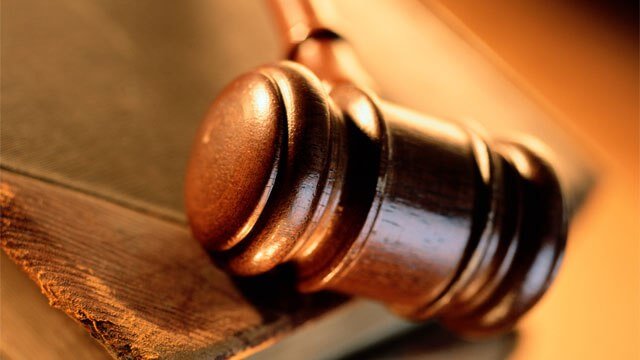
In simple terms, patent litigation is the legal process that unfolds when someone who owns the patent for a particular invention enforces their right by suing another for manufacturing or selling the invention without permission. More often than not, this claim is countered by the accused party who will argue that that particular patent should be deemed invalid.
First-to-File
The first-to-file system is now universal and used in all countries, including the US, which switched to first-to-file when the America Invents Act was signed into law in 2013. That means that even if a person had already developed an idea, unless they have already filed to begin the patenting process, that idea would still be up for ownership.
Patent Litigation – The Long Game
Make no mistake, patent litigation lawsuits are rarely short, easy or inexpensive. That’s because both parties are trying to claim ownership of the same idea or invention and the evidence here is often quite murky. Various patent experts need to be consulted and deposed and the discovery process is complicated and time-consuming. With a lengthy trial comes a hefty price tag and many patent litigation cases will notch up millions of dollars in expenses.
If a claim is being countered, it is the job of the legal team to prove that a patent is invalid. There are many ways to do this, but they all revolve around the idea that an invention lacks originality. If an invention is not far-removed enough from an existing patent, there could well be grounds for making this case.
Settle Up
Once a decision has been made by the courts, the mediation process can begin. In many cases, damages are awarded to the winning party and then the court will mediate between the two.
It’s the aim of the court to get both sides to come to a written agreement. Quite often this will result in the losing party, if countering a claim of copyright infringement, paying royalties to the winning side in order to continue using a patented invention.
Top Notch Support
With the right team behind you, a patent litigation lawsuit can be very profitable indeed. But the process is long and arduous and may end up costing more than the damages you are awarded. A top-notch patent firm will be able to offer you the support you need and provide the necessary expertise to deal with every aspect of your case, but don’t forget it’s a long game, and one that you need the patience and perseverance to play.
Get the latest insights delivered to your inbox
Differences in Patent Eligibility Around the World
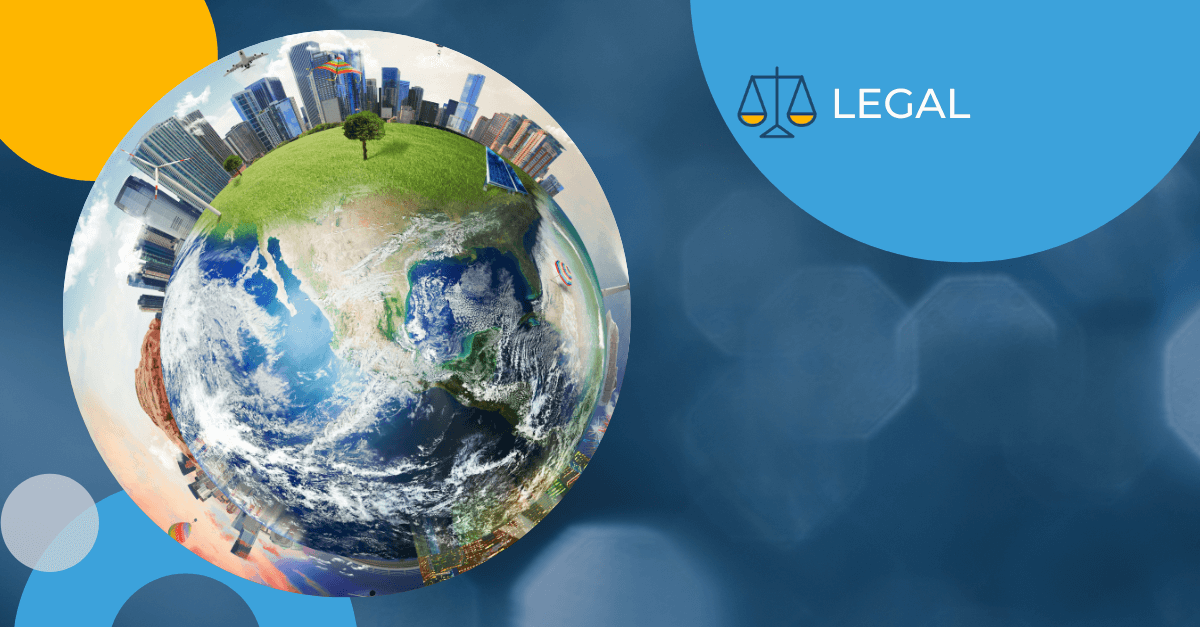
Two things must always be true when you’re applying for a patent, wherever you are in the world — (1) Your invention must be novel and (2) it must be useful. However, different nations have different definitions of these two requirements based on their cultures, legal systems and business environments. This is especially true for innovations related to software, medical methods and business methods.
To patent or not to patent
Though the three fields are quite different, they have issues in common, and countries tend to address them using similar criteria. First among the considerations of patentability is the desire to avoid patents that will inhibit further innovation. In the U.S., for example, care is taken to make sure the subject of a patent application is something specific and not an abstract idea. In other countries, it may mean that certain types of patents aren’t awarded at all. Likewise, patenting authorities everywhere are averse to patents that keep others from doing their jobs. This is critical in the medical industry. In Europe, for example, the European Patent Office (EPO) is wary of awarding medical methods patents that could inhibit the actions of doctors as they treat their patients. Similarly, business method patents must be specific enough that they don’t inadvertently put common procedures and systems out of bounds for other companies.
And then there’s the relationship between copyrights and patents. Software, for example, can usually be copyrighted, and patent authorities who may deny a patent understand that in many cases copyright protection is sufficient. Copyrights are also inexpensive, granted automatically once an application is released, and last longer (70 years vs. a patent’s 20 years). What a copyright doesn’t protect — which is the reason why applicants consider the expense and difficulty of applying for a patent to be worthwhile — are the underlying technologies within the software. For example, Adobe Photoshop is copyrighted as a software application, and its name is trademarked, but it is also the subject of numerous patents for the inventions it contains.
A closer look at some of the world’s key economic players reveals a variety of approaches to awarding patents.
Patent eligibility in the U.S.
Software Patents: In the U.S., the basic philosophy is that a software invention is patentable if it meets two requirements:
- It’s unique — i.e. it’s something new.
- It’s tied to a machine — i.e. the type of hardware platform on which the software runs is specified so that a patent isn’t granted for the description of an abstract process, but rather for something that requires a specific type of physical hardware. (This is a bit more open-ended than the machine requirements in other countries, as we’ll see.)
There are three types of software, however, that are not patentable:
- An algorithm cannot be patented.
- A scientific law cannot be patented.
- An abstract idea cannot be patented.
The third type of non-patentable software relates to the U.S. Supreme Court’s decision of June 19, 2014 in the case of Alice Corp. v CLS Bank. This case set a precedent for the USPTO to reject computerized versions of abstract ideas. As a result, the number of software patents denied by the USPTO under Section 101 has more than doubled due to judgements finding inventions to be nothing “significantly more” than abstract ideas. For example, last year, the Alice standard was used to invalidate a patent application for a patient health information management system claiming to provide a solution to cost inefficiencies in electronic health record systems. The U.S. Court of Appeals for the Federal Circuit issued a decision saying that the patent application was “directed to the abstract idea of billing and also to a fundamental economic practice of calculating a patient’s bill.”
IP lawyers are having a difficult time trying to figure out exactly what qualifies as “significantly more” than an abstract idea and the USPTO is expected to release new examination rules to clarify the matter. One judge has even stated that Alice ends software patents in the U.S., period.
Medical Method Patents: A medical method is patentable in the U.S. if it meets three requirements:
- Specificity — It’s specific enough that its limitations can be clearly identified.
- Practical Application — It’s a method of treatment for a particular condition using a particular drug.
- Central Transformative Effect — It fundamentally changes the nature of its intended target.
Business Methods Patents: Business method patents have been allowed in the U.S. since 1988, though, here again, the Alice decision has cast doubt on their feasibility going forward. Alice aside, a business method can be patented if it produces a “useful, concrete, and tangible result” and has actual real-world value. It can’t be just a concept or an operation intended for further study.
Patent eligibility in Europe
Software Patents – Software, on its own, is not patentable through the EPO. It can only be protected as a “computer-implemented invention,” which is defined as a software program that performs some novel and useful function within a hardware device that is itself being patented.
Medical Method Patents – The EPO will approve an application for a medical method patent if it’s new and inventive, and if it isn’t a form of surgery, therapy or diagnostics. Refusing patents for surgical, therapeutic and diagnostic methods is intended to free doctors from having to worry about unintentionally violating someone’s patent during the treatment of a patient, as noted earlier.
Business Methods Patents – The EPO allows a business method to be patented only if it contains “technical” features, meaning it is a non-obvious, new and inventive method for operating a specific hardware device or group of devices.
Patent eligibility in Asia
Software Patents – Countries like Japan, India and South Korea typically apply the same exception as the EU – i.e. software cannot be patented unless it is an element within a hardware invention. Historically, China has viewed software patents the same way, though recently released patent examination guidelines suggest the country is becoming more receptive to the idea of patenting software as a separate entity. The guidelines released earlier this year by China’s State Intellectual Property Office (SIPO) now allow for the patenting of a (storage) medium plus a computer program process. This also implies to some experts that the two elements — storage devices and software — may be separately patentable as well.
Medical Method Patents – Japan operates under much the same philosophy as the EPO, allowing medical patents as long as they don’t get in the way of practicing physicians’ work. China has allowed pharmaceutical patents since 1992. Interestingly, for medical methods, China’s examiners don’t look for a patent claim to meet a set of allowable standards — instead, they keep a list of all the specific medical methods that are excluded from patenting. South Korea doesn’t allow patents for medical methods, nor does India — which excludes from eligibility “any process for the medicinal, surgical, curative, prophylactic, diagnostic, therapeutic or other treatment of human beings or any process for a similar animal treatment render them free from diseases.”
Business Methods Patents – In Japan and now China, a business method that’s performed using hardware can be patented. In South Korea, novel inventions that improve the technical features of an automated system can qualify for protection. You can’t patent a business method at all in India.
The Future of Patents Around the World
Innovations in software, medical methods and business methods are important to the health of any nation’s economy, and it’s universally understood that continued investment in these areas requires fair compensation for the innovators. It’s equally understood, however, that awarding patents for such innovations requires careful consideration and many countries are still in the process of deciding how to handle these applications. After all, even the seemingly settled U.S. patent system is now vulnerable to profound realignments, as demonstrated by the Alice upheaval last year.
Get the latest insights delivered to your inbox
Protecting Your App’s “GUI” at the 5 Most Frequently Filed Patent Offices
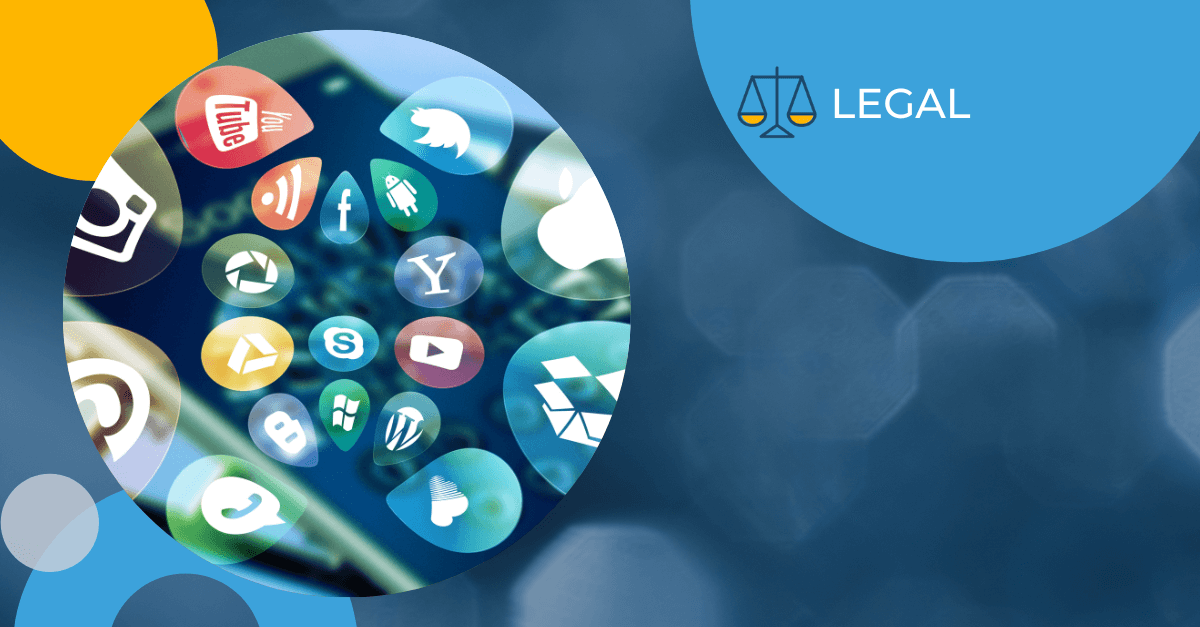
Software is everywhere: You’re probably looking at it right now. The onscreen controls you use to operate a software app — known collectively as the “graphic user interface” or GUI — are a critical part of its look and feel, and thus can be an important differentiator in the marketplace. Companies like Samsung, Microsoft and Apple invest considerable resources into the design and function of their GUIs in order to enhance their customers’ user experience/user interface (UX/UI). Yet, despite the time and money involved in creating the perfect GUI, this is a new form of intellectual property, which means that global IP protection remains fluid – and that is a major concern for companies that don’t want their designs to be copied.
Why It’s Complicated
A GUI lies somewhere between visual design and functionality, and this ambiguity is at the core of many countries’ different views. For example, in 2016 the World Intellectual Property Organization (WIPO) distributed a questionnaire to all its member states to learn about their different approaches to protecting GUI, icon and typeface/type font designs.
As you can imagine, a complex and inconsistent assortment of responses came in from the 44 countries and two regional offices (EUIPO and OAPI) that answered the questionnaire – though only one, Cyprus, was not providing any IP protection of any kind.
In addition to the range of global IP protection options available, local oddities can make the process even more frustrating. Under Australian law, for example, design protection is available – but it is limited to the visual features of products “at rest.” For a computer or mobile device, “at rest” means powered off. Any device that is powered off will show nothing onscreen – obviously a non-starter for getting your GUI patent protected.
Top 5 Most Frequently Filed Patent Offices
Since we can’t examine all 44 countries that responded to the WIPO questionnaire in this blog, we decided to focus on the five patent offices that received more than four-fifths of all patent filings in 2016. According to WIPO, they were:
- China (received 42.8% of all patent applications filed in 2016)
- United States (19.4%)
- Japan (10.2%)
- South Korea (6.7%)
- Europe (5.1%)
China
China made GUIs eligible for design patents in May 2014. After an initial boom in applications, however, Chinese IP service CHOFN says it’s become clear just how far short the available protections fall. This is because, under current Chinese law, a patentable design invention can only be registered alongside its associated physical hardware.
IAM media explains, “Article 2 [of China’s Patent Law] provides that China’s design patent protects only designs on physical products. Therefore, pure GUI designs with no hardware are not patentable.” This means that software — and GUIs — that can be run on any computer cannot currently be protected by a design patent. Many IP experts, such as CHOFN, feel disappointed that GUI “is still considered a product with a shape” and believe this law is “based on outdated thought processes.”
United States
In the U.S., a GUI can be protected by a design patent as long as it’s tied to a function. (The function itself is not part of a design patent; function must be registered separately.)
Lauren Dreyer, speaking to TechCrunch, explains, “While the underlying article must have a function (meaning it isn’t a piece of artwork), the design patent protects the ornamental aspects of the design — meaning the design cannot be solely dictated by function.” This is because the function could conceivably be executed via other interfaces, so “a UX/UI design patent would cover the aesthetic, as opposed to the specific functionality, of the experience.”
Japan
Under the Japanese Design Law, GUIs are protected as part of goods. That means GUIs must be connected to physical products and cannot be protected individually. Managing Intellectual Property gives the following example, “If you wish to register a GUI to be used for a digital camera, the title of the design application must be ‘digital camera’.”
As such, GUIs of digital operating systems and apps that run on computers are not currently patentable in Japan. Like China, many feel that the GUI patent eligibility requirements are outdated.
South Korea
In South Korea, a GUI can be protected through a “design right.” Design rights specifically cover website page layouts, app interfaces, and GUIs embedded in mobile devices. The only caveat is that a design right application must show the GUI in context and not as a free-floating design. Icons can also be registered for protection.
Korea’s expansive protection of GUIs is part of perhaps the most up-to-date system for IP protection of modern software inventions among the major IP nations.
Europe
In the European Patent Office (EPO), icons, typefaces, and graphics are not patentable as individual designs – but can be if they perform a technical function. According to the EPO, “Features which specify a mechanism enabling user input, such as entering text, making a selection or submitting a command, are normally considered to make a technical contribution.” On the other hand, “Features concerning the graphic design of a menu (such as its look and feel) which are determined by aesthetic considerations, subjective user preferences, or administrative rules do not contribute to the technical character of a menu-based user interface.”
Tackling Pandora’s virtual box
It’s clear that there’s a global desire to move cautiously in providing IP protection to software-based inventions such as GUIs. As such, patents and design rights for GUIs remain a moving target, with the rules and requirements continually shifting.
Acquiring protection for a GUI internationally requires a nimble approach to filing across different countries with different eligibility requirements. This is where an experienced Language Service Provider (LSP) can provide significant value: International IP experts such as Morningside Translations continuously track evolving IP requirements worldwide to ensure that your filings are appropriate wherever you apply for protection. For help filing or translating your design patent, contact Morningside today.

